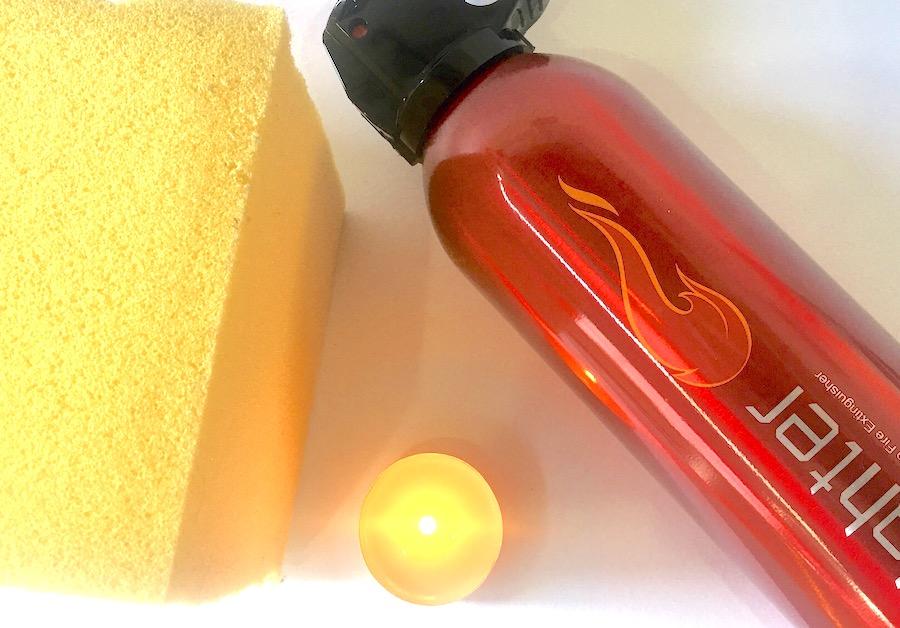Flame retardancy and the risk of fire hazards are always important to be aware of when purchasing or using products. And foam products are no exception. But what about the memory foam that many of us have in our mattresses and other furnishings, is memory foam flammable?
In this article, I’ll be going over the details of whether memory foam is flammable, what happens to memory foam during a fire, and all distilling all the important information regarding the regulations. Starting with a quick summary…
As a polyurethane material, memory foam is considered flammable. It takes time to ignite but once ignited fire can spread rapidly, emitting dense smoke and toxic gas. When memory foam is coated in a fire-retardant agent, flammability is reduced. This is because of its fire-resistance properties.
The flammability of memory foam also known as visco-elastic polyurethane foam takes a much more detailed approach.
Find out more exactly what memory foam is here, along with the features and uses. But regarding memory foam flammability, let’s get into the details about the flammability and fire risks of memory foam.
Highly flammable in its raw form
Generally speaking, memory foam is flammable. The extent to which it can be flammable or how flammable it is depends on a number of factors.
In its raw form, without any fire retardant agents added, or any other fire-resistant additives memory foam is highly flammable.
Memory foam is a cushy material made of polyurethane, which is essentially man-made plastic with numerous chemicals added.
Like with any form of plastic, memory foam also acts – and reacts – the same with fire and in terms of flammability.

Memory foam coated with fire-retardants
In some countries, memory foam mattresses are mandated to meet safety regulations to reduce the potential severity of mattress fire.
In the USA for example:- The Consumer Product Safety Commission requires that all new mattresses manufactured in the United States should withstand up to 30 minutes of exposure to an open flame.
Here are the official standards and outlines for the United States Mattress open flames test.
Almost all developed countries conduct their own tests and adhere to similar safety standards regarding the risk of fire and products containing hazardous chemicals that react when exposed to flame.
In general, to help mitigate this risk and the risk of flammability with memory foam, manufacturers are now adopting the habit of coating memory foam in a flame-retardant agent.
This agent gives memory foam much greater fire-resisting properties, thereby avoids a finished memory foam product from igniting quickly when compared to the raw form of memory foam.
However, there is some controversy between the safety impacts fire-retardants can bring to the foam, especially for mattresses made out of memory foam coated with fire retardants.
Fire retardants like wool, Kevlar, and treated rayon pose no health risks.
But the chemical-based fire-retardants may pose some risks, even though it is the strongest and most effective fire-retardant option manufacturers rely on.
Examples of such chemical-based, unsafe fire retardants include PBDEs, acid-treated cotton, TDCPP, and certain types of resin.
Effects of flammability on memory foam
In its raw form i.e. without any coat of fire retardants, it will still take time to ignite (catch fire). So memory foam will not catch fire as quickly you might expect, even though it is flammable. And the period before ignition varies depending on several factors, including the density.
The effects of how a memory foam burns can be related to dried wood, it will take a short period of time to heat up but will eventually ignite.
Also be aware, that once ignited, it can spread relatively quickly through the memory foam, and continue burning at a rapid pace, especially in its raw state.
This will quickly escalate to emitting severe heat, dense smoke, burning liquid, and toxic gases such as carbon monoxide as well as even more lethal chemicals such as hydrogen cyanide. This applies to all memory foam, so your mattress topper or pillows may be equally at risk as your mattress.
As you can probably guess, the time taken prior to the memory foam igniting is the only point at which you can reduce the potential effects of burning.
Once it ignites and starts burning it then becomes very difficult to get under control.
Most importantly when memory foam burns, ensure you are well away from its flames – and the smoke – as it is extremely toxic when inhaled.
This is also one of the reasons why it’s not considered safe, or healthy, to burn foam mattresses in general …including memory foam. Be sure to dispose of mattresses, bedding, and similar products safely.

More foam help…
I hope this has helped to answer the question – is memory foam flammable. Be sure to check out different types of foam to find the right one for your needs, and keep safety at the forefront of finding the right foam product.
